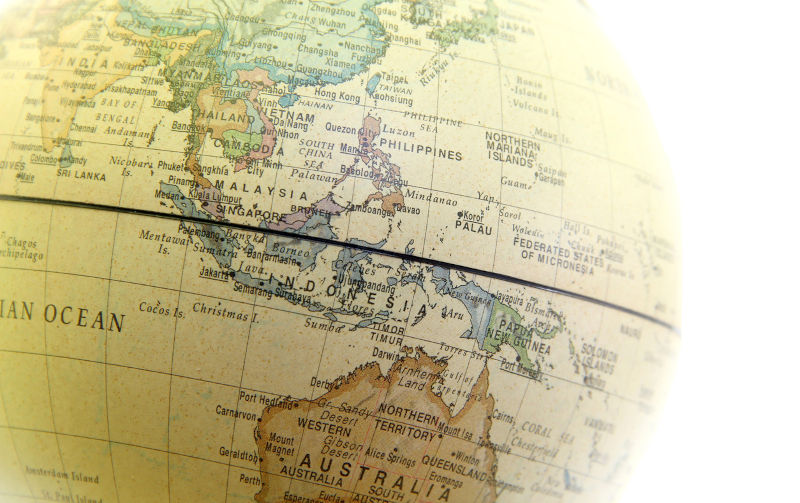Australia’s misunderstanding of the Asian Century
May 14, 2025
In October 2012, Prime Minister Julia Gillard released a white paper titled Australia in the Asian Century.
The paper offered a lightweight commentary about a coming Asian Century and provided a few thought bubbles on how Australia might respond to such a development. What it failed to understand was that the Asian Century had been well and truly under way for at least 50 years prior to 2012.
What the white paper showed us was just how shallow were the understandings of the Asian Century of government, business leaders, and academic and media commentators. That lack of understanding continues to constrain policy-making, trade and business strategies, and media analyses today. It’s a fair bet, too, that the vast majority of Australians remain shockingly ignorant of the diverse histories, cultures, languages and politics that enliven the Asia-Pacific region.
The Asian Century began in the 1960s when Japan dragged itself from the ruins of the Pacific War to become, for about a decade, the biggest economy in the world (see Ezra Vogel, Japan as Number One: Lessons for America). Japan’s economic and social policies rapidly expanded its economy, right up until the Nakasone Government of 1982-1987 which introduced economic reforms under the tutelage of then US President Ronald Reagan. Nakasone’s aping of Reaganite policies comprehensively unravelled Japan’s growth successes.
Meanwhile, the Chinese dragon was emerging from under the dead hand of its Maoist years. Deng Xiaoping’s late-1970s economic reforms set China on a growth trajectory that is on course to make it the biggest economy in the world in the near future (some experts argue that it is already the biggest). China is becoming the major military power in the Asia-Pacific region with a defence and offence capability that is rapidly expanding. It is on course to equal or surpass the military power of the US in the region.
This is occurring as America’s decline as a great power is becoming more apparent by the day, and which is hastening under the Trump administration. The Asian Century — or more accurately, the China Century — is upon us, like it or not. Moreover, other Asian states are cruising along, some with impressive economic growth rates and growing assertiveness in regional and global politics. Indonesia is a standout example, and it is soon to rank among the top four or five economies.
Meanwhile, the conventional thinking in Canberra was that Pax Americana would last forever, especially following the implosion of the Soviet Union in 1989, leading the US commentator Francis Fukuyama to declare that the Cold War had been won by the US, that liberal capitalism was about to sweep the world, and that almost every country would sooner or later become a version of America. This crudely imperious view of globalisation proved to be delusional, a fact still that has barely registered in the political and business circles in the “lucky country”. Delusion is especially the name of the game in Australia when it comes to understanding China.
Australia must now face up to two vital challenges.
The first challenge requires a wide-ranging program to educate Australians in the histories, cultures and languages of Asia. For their country to prosper in a peaceful region, Australians need to see themselves as a part of the region’s rich cultural mosaic. They need to feel at home in the region. Bob Hawke understood this when he urged the country to “enmesh” with Asia. Paul Keating echoed this, when he called for “engagement” with Asia. Moreover, Keating hit the nail on the head in a lecture in Singapore in January 1996 that Australia had to find its security in Asia, not from Asia,
Given that China is now the leading power in the Asia-Pacific, our schools and universities need to graduate many more students capable of communicating fluently in Mandarin and who are equipped with a sound education in China’s cultural history, politics and its economy. These skills are badly needed in the country’s diplomatic corps, in business, in the media – and by teachers in our schools and universities. This should be a major priority for the next federal education minister.
Other Asian studies programs are also needed across all our educational institutions. Leaving languages studies until high school or at the tertiary level is a counterproductive strategy. Languages should be taught from the earliest years when young minds are flexible and able to absorb them, playfully at first, and then more systematically (though still enjoyably). Moreover, languages need to be culturally and historically contextualised, not just taught as dry exercises in vocabulary and grammar.
The second vital challenge facing Australia today is learning how to manage the decline of the US as a great power and assumed ally. While already on the way, the decline was exacerbated by America’s adoption of neoliberal policies from the Reagan administration onwards. Those policies delivered a hollowed-out economy that sent manufacturing jobs offshore (to China, Mexico, Taiwan, etc.) and created massive inequalities in American society. The deregulated nature of its financial industries was the root cause of the Global Financial Crisis of 2008-09 with devastating consequences for ordinary Americans and negative ripple effects right around the world. It is beyond belief that the architects of the GFC (bank CEOs and others in the financial sector, as well as their political facilitators) still remain in their comfortable and grossly overpaid roles rather than languishing in jail.
It would be fickle to blame Donald Trump for America’s decline. He is a dramatic symptom of his country’s decline, even his policies are certainly hastening it. The decline began gathering pace after America’s defeats in the Korean and Vietnam Wars. The Cold War handed the CIA and the military-industrial complex unimaginable largesse and influence. However, when a great power begins spending more on its military than on the productivity and needs of its people (health, education, housing, welfare programs, etc.) then — as the example of the Soviet Union demonstrates — it’s on the road to collapse. The Trump era will go down in history as the moment that America entered the final stage of its great power dreaming.
Australia’s dependency on the US as its “great and powerful friend” is no longer tenable. It never has been. The absurdity of arrangements such as AUKUS and the placing of US military installations on Australian territory must end. Ironically, given the coming crisis in the US economy, Washington is likely to rein in those arrangements for economic reasons, rather than Australia having to negotiate their exit.
Learning to live as an independent country in its Asia-Pacific setting is now vitally important for Australia’s future generations. Australians must learn to live knowledgeably and respectfully in a cosmopolitan Asia. It’s time to enmesh in the region, to deeply engage with it and to fully embrace the many positives of what this can offer to the country’s security and prosperity.
Dr Allan Patience is an Honorary Fellow in the School of Social and Political Sciences in the University of Melbourne.

